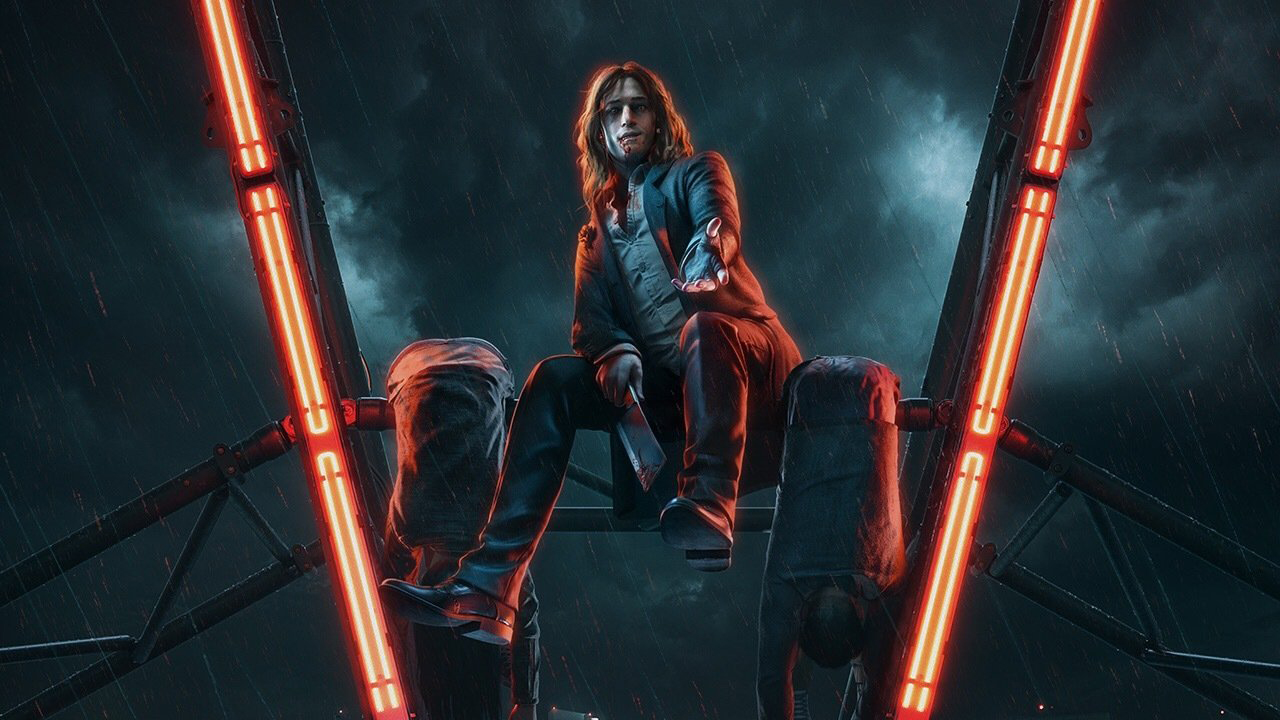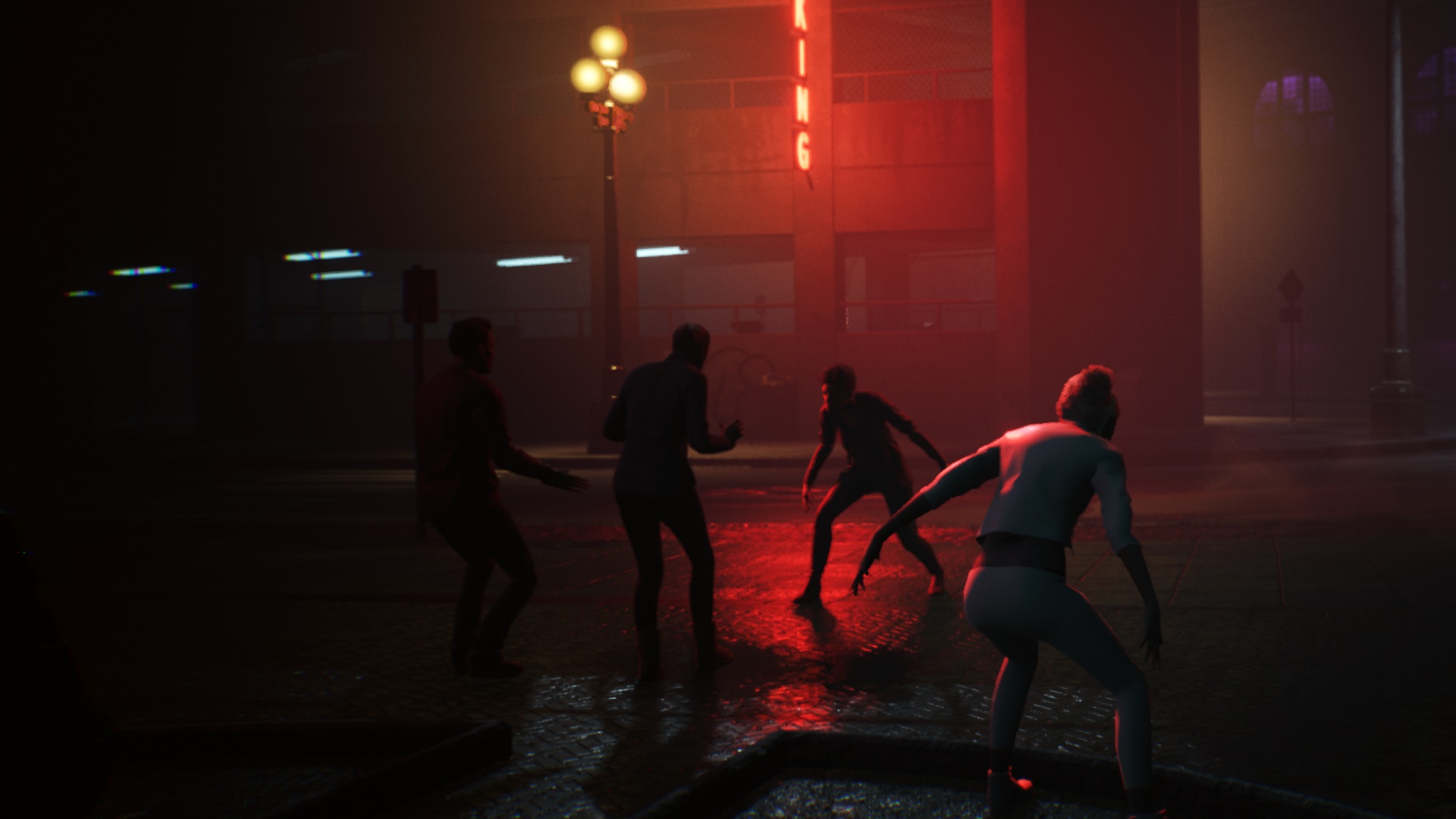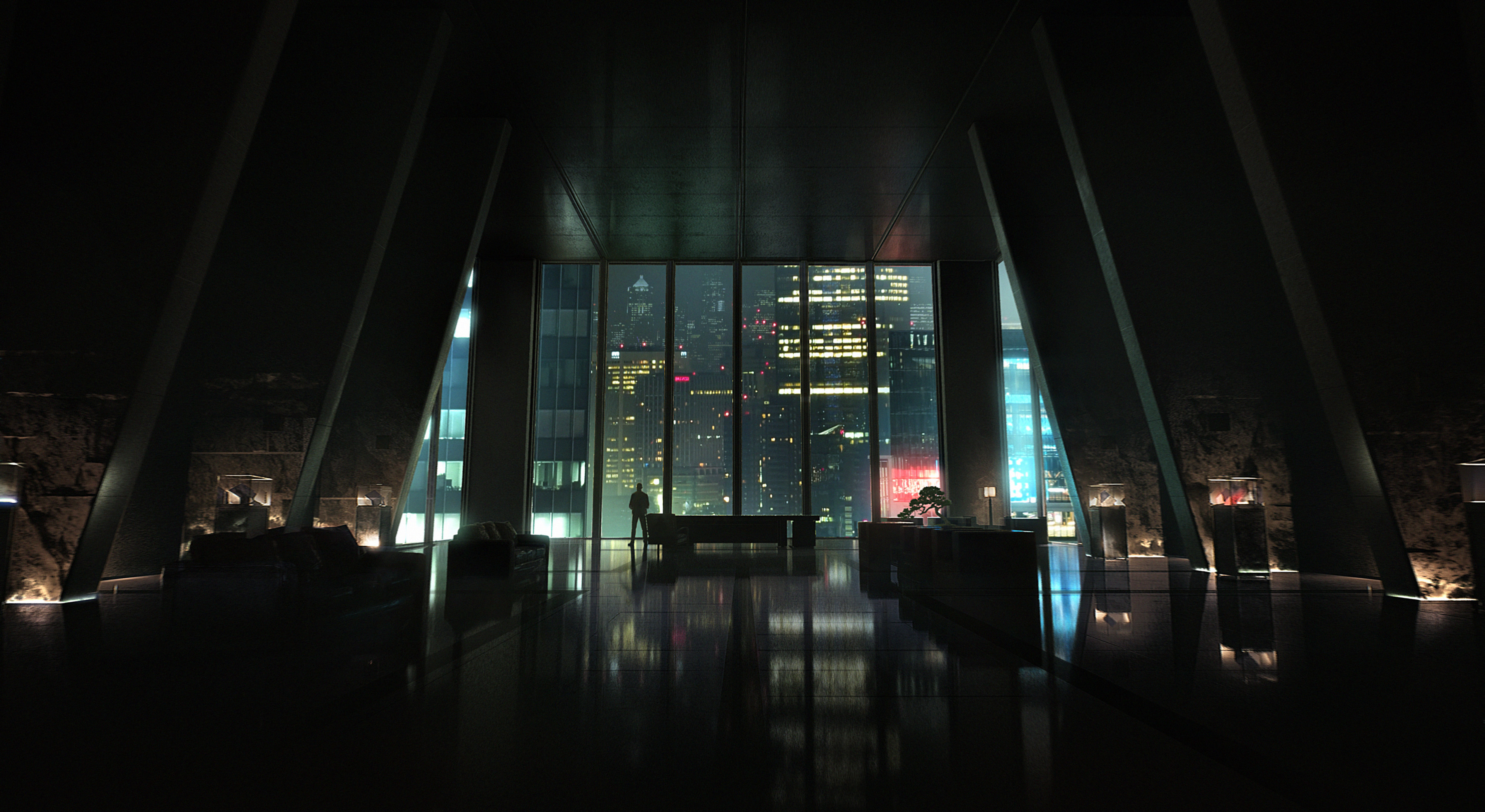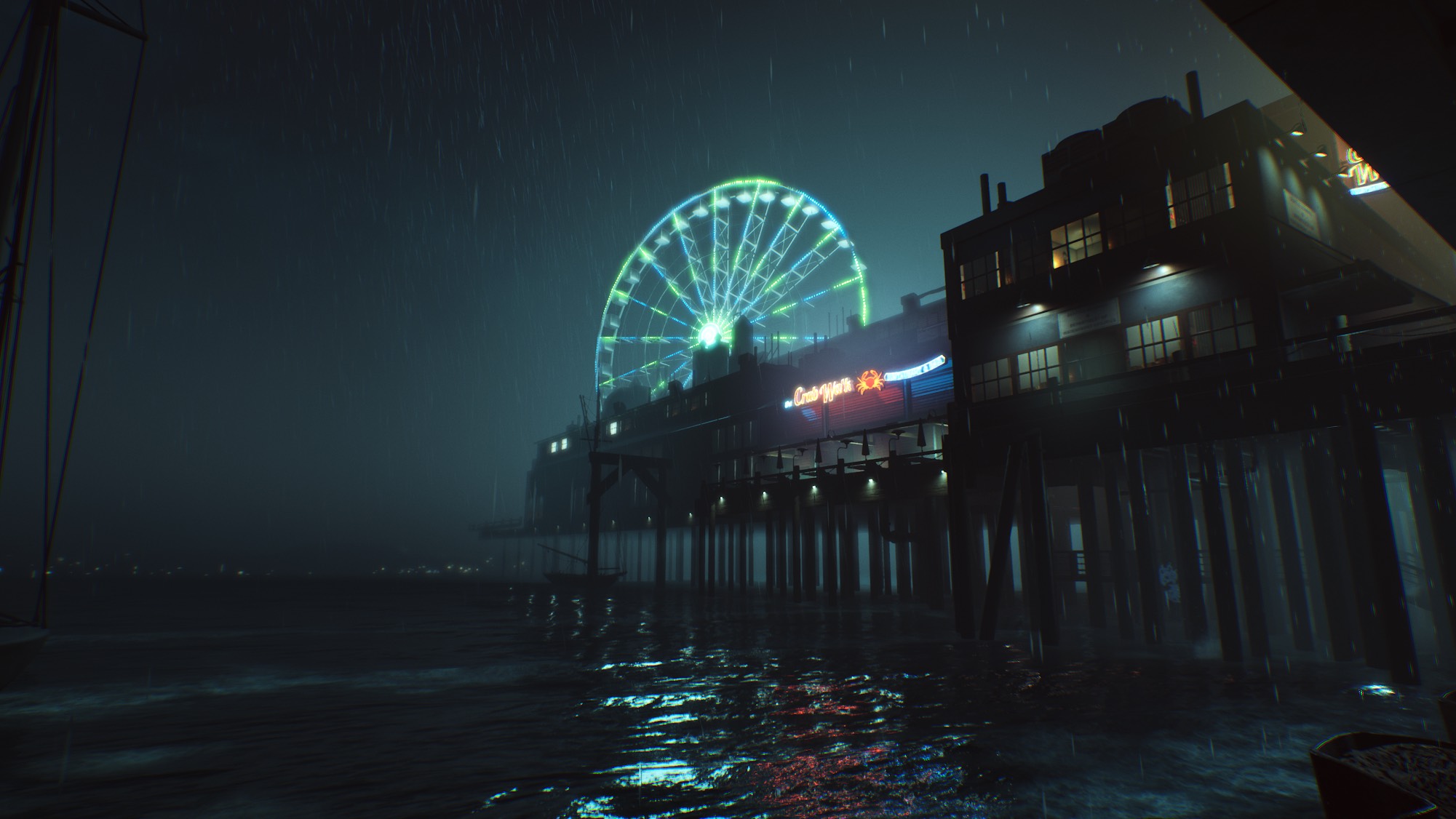
Come back tomorrow, Thursday May 2, for some exclusive news about Vampire: The Masquerade—Bloodlines 2.
This feature originally ran in issue 330 of PC Gamer UK. For more quality articles about all things PC gaming, you can subscribe now in the UK and the US.
Here are three words I never thought I’d write: Bloodlines is back. It’s been almost 15 years since Troika Games’ vampire RPG first launched, winning and breaking hearts in equal measure. Bloodlines remains one of the most stylish and intricate first-person RPGs ever made, with a truly remarkable amount of depth and dynamism baked into its dark and seedy Los Angeles. But Bloodlines’ premature launch also meant it was riddled with bugs. After years of community support, it is still a challenging game to grapple with.
Bloodlines is one of the great ‘what ifs’ of PC gaming. What if Troika had been given another six months to sharpen Bloodlines’ fangs? What if the game hadn’t launched on the same day as Half-Life 2? What if the likes of Leonard Boyarsky and Tim Cain and Brian Mitsoda had been given a shot at a sequel, to capitalise on all the lessons they’d learned?
We’ll never know the answers to those first two questions. But we will, finally, get an answer to the third. “If they’d asked me to do another one back then I would have done it,” says Brian Mitsoda, lead narrative designer on Bloodlines and Bloodlines 2. “I think one of the best things about the World of Darkness IP is that there are—just in one city alone—hundreds of stories. There’s always more stories to be told.”
Mitsoda is working with Hardsuit Labs, the developer and creative lead behind Bloodlines 2. The game is being published by Paradox Interactive, which acquired White Wolf in 2015, and thus owns the World of Darkness IP. Indeed, the acquisition of White Wolf by Paradox was the trigger for Bloodlines 2’s development. In an unusual turn of events, HSL began working on Bloodlines 2 the moment they heard about the acquisition, pitching the idea directly to Paradox.

“When we got wind of Paradox acquiring the World of Darkness IP, within about ten minutes I had my creative director Ka’ai Cluney come into my office and say ‘We need to contact Paradox. Do you know anybody there, because we need to pitch them a game?’,” says Andy Kipling, the CEO and co-founder of Hardsuit Labs. “We spent November and December and January putting together a pitch that we could show them at DICE. My assumption, for what it’s worth, was Paradox had a clear plan in place and that we would be coming in from out of the fold to try and make a hail-Mary pass.”
Keep up to date with the most important stories and the best deals, as picked by the PC Gamer team.
Kipling’s assumption was correct. Paradox did have plans for a Bloodlines 2. “But it was also something we considered quite valuable and that we didn’t want to give out of our hands too easily,” says Florian Schwarzer, product manager at Paradox Interactive.
Unsurprisingly, Paradox was sceptical about Hardsuit’s plans. “I [went] into that first Skype meeting with them expecting to watch a burial,” Schwarzer says. Instead, Schwarzer was thrilled by the presentation, to the point where they immediately began discussing pre-production. “This was very much Hardsuit Labs taking a tremendous risk and getting us to the point where we made a decision for them. Nothing more, nothing less.”
It’s a risk Paradox is confident has paid off. At the company’s HQ in Stockholm, I’m presented a 30-minute in-game demo, controlled by Bloodlines 2’s lead producer Christian Schlütter. It’s the first time Paradox has shown the game to anyone outside the company or Hardsuit Labs, and the production team is still uncomfortable saying the game’s name out loud, often referring to Bloodlines 2 by its codename—Project Frasier.
Bloody backstory
Bloodlines 2 opens with a direct call-back to the original. Your character—whose appearance and backstory can be customised before the game starts—awakens on the floor of what appears to be a courthouse. It transpires you’re both a witness to and a suspect of a Mass Embrace—a supernatural terror attack in which a group of humans, including you, were assaulted on the street and illegally turned into vampires. Representatives from multiple factions, including the Camarilla, are present to watch your trial and execution. After recounting events from your perspective, however, a fire rages through the building, enabling your escape.
Unlike the first Bloodlines, you don’t pick your clan during character creation. Instead, all players start-out as a “thin-blood”, a weaker type of vampire with a unique set of powers.
Bloodlines 2 is built in Unreal 4, and plays mostly from a first-person perspective. The escape from the burning courthouse doubles as the tutorial. Unlike the first Bloodlines, you don’t pick your clan during character creation. Instead, all players start-out as a “thin-blood”, a weaker type of vampire with a unique set of powers.
Hardsuit explains that this was a practical choice both narratively and mechanically. “There’s a lot of political problems with thin-bloods and being a thin-blood is gonna make it more of a challenge to exist in the World of Darkness. That’s a good place to start in an RPG,” Mitsoda explains. Kipling adds that starting as a non-clan vampire gives players a chance to “understand what a clan means so they can make more informed choices, rather than making a decision up-front and getting 30 minutes into the game and going, ‘Damn I wish I’d chosen something else’”.
Players will get to choose a clan later in the game. Paradox isn’t prepared to reveal which clans are present. But they confirm there will be five playable clans in the game. This is slightly fewer than Bloodlines 1, but Hardsuit and Paradox want to focus on making each clan distinct in their playstyle.

“We wanted to pick those clans that deliver a clear player-fantasy,” says Schlütter. “If I’m someone who just likes to punch people in the face, we have that clan for you. If I’m someone that … in a normal roleplaying game, would play a wizard or something, we also have a clan for that.” Moreover, your choice of clan will provide access to unique abilities and also unique locations in the game. “If you want to see truly everything of the game, you will want to play it with different clans,” Schwarzer confirms.
Environments, meanwhile, are built so that that you can navigate them in multiple ways. Alongside the original Bloodlines, Paradox cites games like System Shock, Deus Ex, and Dishonored as other primary inspirations.
While clan-specifics are still under-wraps, the demo revealed some of the powers you’ll wield as a thin-blood. Thin-bloods can grow bat-like wings, transform into mist, and also wield objects from a distance via telekinesis. At the end of the tutorial, players will have to choose one of these powers, which has its own skill-subset.
Environments, meanwhile, are built so that that you can navigate them in multiple ways. Alongside the original Bloodlines, Paradox cites games like System Shock, Deus Ex, and Dishonored as other primary inspirations. “These are games that give you freedom to explore the world but also to tackle different situations in the way that you as a player want,” Schlütter says. “We bring your playstyle to the table, that is something that of course, we need to deliver with Bloodlines 2.”
Eventually, your vampire escapes from the courthouse basement into what appears to be a ruined underground city. Bloodlines 2 is set in contemporary Seattle, and the ruins belong to old Seattle, which was almost literally paved over after a fire gutted the city in 1889. In your role as a vampire, Seattle’s underground will play a significant part, although Paradox and Hardsuit won’t specify how just yet. Hardsuit is happy to discuss the reason for choosing Seattle as the setting, however. “One, we live here, which makes it a lot easier to gather reference,” Mitsoda says. “Two, the biggest thing about choosing Seattle as a location is it’s under-utilised as a setting.”
Vampirication
Like other west-coast US cities, Seattle is undergoing a period of radical and controversial transformation, largely due to the presence of huge corporations such as Amazon. Hence, themes such as gentrification and the divide between the old and the new faces of Seattle will form key parts of the story.
“One thing that we have in the city is this kind of identity crisis. You’ve got how Seattle has been over the last 100 years, and how it is changing due to the tech side and the money side,” Mitsoda explains. “We have billion-dollar companies, trillion-dollar companies. And of course wherever there’s power and money you’re gonna get vampires. It’s like leaving cheese out.”
We first glimpse Seattle as we emerge on the waterfront beneath Pier 57, its iconic Ferris-wheel illuminated in neon-lights (Bloodlines 2’s Seattle exists in perpetual night, much like the first game’s LA). Moving toward the pier, our vampire encounters a man holding a mobile phone, which begins to ring. On the other end of the line is a mysterious woman, who instructs us on the basics of feeding.
This works much like the original Bloodlines, with a sweet-spot between getting the optimum amount of blood and accidentally killing your victim, losing humanity in the process. We’re also instructed to meet someone up on the pier. As with Bloodlines 1, the game is fully voiced, and while neither Paradox nor Hardsuit will spill details, Mitsoda boasts that Bloodlines 2’s voice cast is “maybe the best of any game”.
Inside a building on the pier, our vampire is attacked by a group of thugs. Combat, particularly melee combat, was one of the weakest elements of the original Bloodlines. Hardsuit wants to make certain this is addressed in Bloodlines 2. “Ka’ai’s been working on a first-person melee combat system for years,” says Russ Nelson, CTO and co-founder of Hardsuit. “We knew we needed to have that up-close and personal feeling when you’re in a fight.”

Unlike the original, both melee and ranged combat are viewed from first-person. It’s a highly improvisational system, with your vampire using his fists, objects in the environment and his powers to gain an edge. For example, your thinblood can yank firearms out of enemy hands using telekinesis, or fly into the air to literally get the drop on an opponent. Also players will be able to equip two melee and two ranged weapons at any a time. But as Schwarzer says, “How you and your equipment looks at the end of that fi ght might be quite a bit different.”
However you approach combat, Hardsuit is keen to ensure that it communicates your supernatural power, speed, and resilience. Even as a thin-blood you can comfortably tear through an armed gang of humans using only your fists.
At a higher level, you’ll be able to enact devastating special moves, for which the camera will zoom out into third-person. You won’t only be fighting humans, there will be plenty of tougher enemies in Bloodlines 2, including numerous types of vampire.
After the fight, we encounter a man who turns out to be a fellow thin-blood created in the Mass Embrace. We don’t get much time to compare notes, however, as he is immediately killed from behind by another vampire who whispers “You’re not on my list” to us before vanishing. One of the side-quests in Bloodlines 2 involves looking for the remaining vampires created in the Mass Embrace—known as the “Unsanctioned Seven”.
Schlütter notes this quest will explore, “What happens to a completely normal human, with all their wants and needs and life situations, when they suddenly get turned into a vampire.” After the incident at the pier, for example, we travel to our first safehouse, an apartment sub-let by a reclusive vampire named Dale, who is our guide into the world of Bloodlines 2 much like Smiling Jack was in the original. He’s also the first character you talk to at any length. As you’d expect, dialogue plays a huge role in Bloodlines 2, with your skills and abilities affecting your conversation options. Mitsoda was also keen to retain the noir-ish vibe and black humour of Bloodlines 1.

“This game has just been incredibly fun to write. The characters are some of my favourite characters that I’ve ever done for a game, and Paradox has given me a lot of freedom, which I’m not used to from the publisher side, just kind of going, ‘What do you want to do?’.” Mitsoda won’t go into specifics, but Paradox hints that amongst those characters will be familiar faces from Bloodlines 1.
After giving us the basics, Dale lets us into the apartment. Inside is a pinboard covered with notes and documents, put up by the fledgling vamp we just saw murdered as he tried to figure out who was responsible for his transformation. Bloodlines 2’s approach to quest design is closer in spirit to the original than more modern RPGs, in the sense that quests won’t be flagged by NPCs with exclamations marks floating above their heads. You’ll need to explore to uncover new stories and adventures.
Among the documentation, for example, is a missing cat poster. As you explore Seattle, you’ll find greater concentrations of missing cat posters in certain areas and, if you take the time to investigate the phenomenon, you can eventually discover where all the cats have gone, and why they have disappeared…
While some quest lines can be stumbled upon, others may arise depending on how you play Bloodlines 2. Unlike the first game, there are multiple factions alongside the Camarilla that you can work for. “You’ll have a different experience based on who you’re working with, and you can even, you know, insult factions to the point where they won’t work with you anymore,” he says. “You can really do a number on your reputation in this game,” Mitsoda explains.
Code of conduct
A crucial part of this reputation is the Masquerade, the code of conduct to which all vampires are expected to adhere. The key word here is ‘expected’. You can violate the Masquerade in small ways, such as being spotted feeding by another human, or bigger ways, like going on a public rampage. Both will have ramifications for you and the city. People will be less likely to go out at night, meaning you’ll have fewer bodies to feed on, while repeated violations may cause Seattle’s chief vampire, Prince Cross, to send supernatural enforcers after you.
Schlütter demonstrates this at the end of the demo by venturing into the first of the game’s multiple city-hubs, Pioneer Square (Bloodlines 2 follows the hub-and-spoke design of the original). He drops from a rooftop and publicly feeds on a civilian, which causes the police to start chasing him and triggers a Masquerade violation.
Importantly, the Masquerade isn’t a one-way descent into chaos. You can restore your Masquerade rating to a certain extent. One way to do this is to join Prince Cross’ clean-up crew, which clears up the messes left behind by Masquerade-violating vampires.
The clean-up crew exemplifies the weirdness Mitsoda and Hardsuit are hoping to carry over from Bloodlines to the sequel. The organisation is run by a man named Bart, who has seen every kind of horror imaginable and is completely numb to it. An early quest involves clearing the mess left behind after a disastrous romantic entanglement between a vampire and a human. “If someone exploded in a small hotel room, that’s what that would look like,” Schlütter explains. “You’re there to just pick up the pieces. Literally, the pieces. And Bart just comments on whatever is there, eating his noodle-soup.”

Hardsuit Labs want players to explore Bloodlines organically. This extends beyond how players find quests, to how they solve them. In the early game, your choice of character background will impact upon your experience. If you choose Police Officer, for example, then should you need to visit the police station, you don’t have to find a back entrance and sneak around, you can just walk through the front. But even this comes with complications. “Your colleague will come and say ‘Hey where have you been the last two weeks? Social security has covered for you, but you need to get back to work’,” Schlütter says.
It all sounds enormously ambitious. There are many other systems and ideas explained that I’ve barely touched upon. Schwarzer states that Hardsuit labs “set out to provide as many active unlocks as possible during your progression system” while the developers point out there will be extensive customisation options that let you enrobe your vampire however you like. Plus, there’s the new Resonance system, which gives each NPC’s blood a different ‘flavour’ based on their emotional state. Feeding from someone who is angry, for example, will provide a short-term melee damage buff, while repeatedly feeding on angry people will let you unlock a permanent passive bonus.
At this point, it’s worth repeating the ambition of the original Bloodlines was as much a curse as it was a blessing. Since Bloodlines 2 aims to take those ideas even further, it’s natural for any excitement to be mingled with a little apprehension. But there are some key differences between the two projects. Bloodlines 1 was launched on an experimental engine the developers were grappling with for the first time, whereas Hardsuit Labs has plenty of experience working with Unreal 4. In addition, everyone on the team is keenly aware of the mistakes Bloodlines made. “Identifying what worked well in the first one and then what didn’t, and either addressing those or avoiding those, was definitely a key part of that approach,” Kipling observes.
Lastly, there’s the publisher. Bloodlines 2 represents a watershed moment in Paradox’s history. It’s a follow-up to one of PC-gaming’s most treasured cult classics, and a big-budget production in a genre that isn’t the company’s standard fare. Ebba Ljungerud, Paradox CEO, sums up Bloodlines 2’s significance to the company. “There is so much love for Bloodlines 1. So there’s an enormous amount of excitement of just doing something in this world,” she says. “But it has to be really great, because otherwise it’s never going to fly.”
It had its problems, but we loved the original Vampire: The Masquerade so much we put it in our list of the best RPGs of all time.
Rick has been fascinated by PC gaming since he was seven years old, when he used to sneak into his dad's home office for covert sessions of Doom. He grew up on a diet of similarly unsuitable games, with favourites including Quake, Thief, Half-Life and Deus Ex. Between 2013 and 2022, Rick was games editor of Custom PC magazine and associated website bit-tech.net. But he's always kept one foot in freelance games journalism, writing for publications like Edge, Eurogamer, the Guardian and, naturally, PC Gamer. While he'll play anything that can be controlled with a keyboard and mouse, he has a particular passion for first-person shooters and immersive sims.

